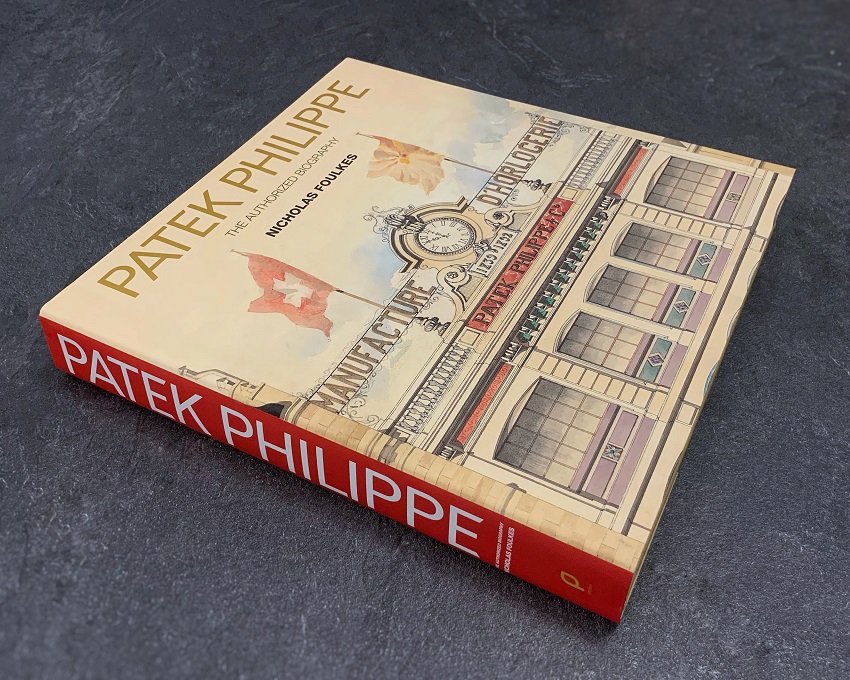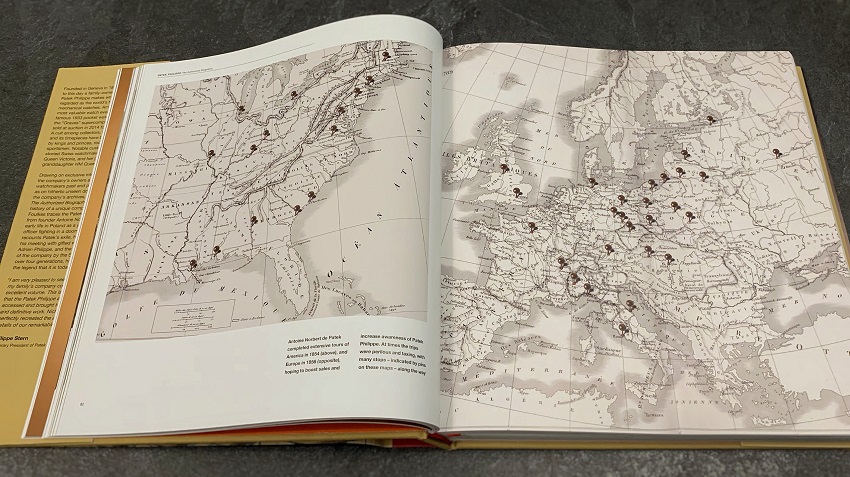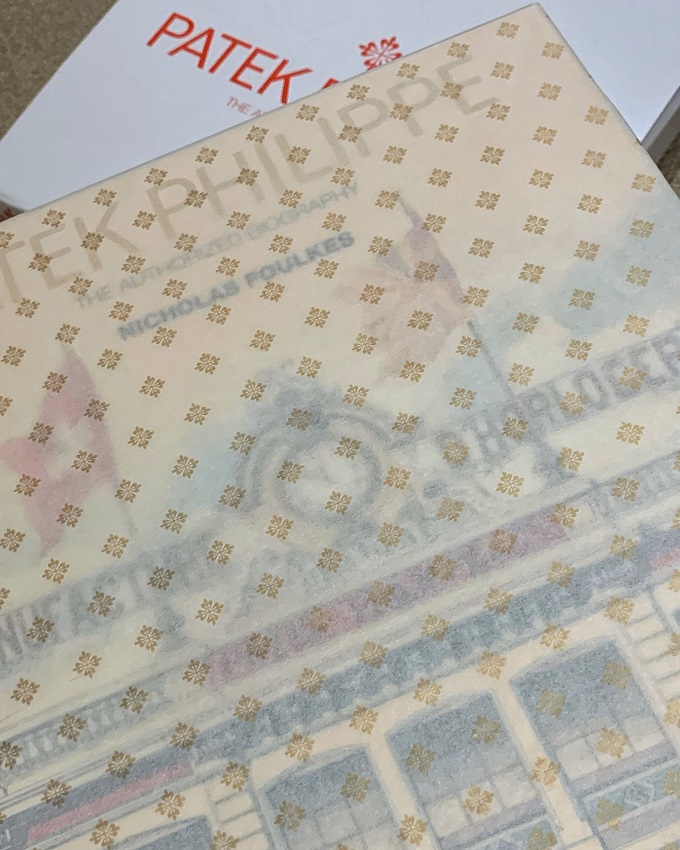During my visit to Geneva last month, after spending a wonderful afternoon exploring the Patek Philippe Museum in Geneva, I was somewhat disappointed when we had left that there wasn’t anything to purchase as a memento. You aren’t allowed to take photos in the museum, and given the extraordinary collection on display, I felt like I wanted something to remind me of the visit and just exactly what it was that I had seen.
When I got home, I started researching various books and writings on Patek Philippe, which led me to the Patek Philippe Library on their website. After a visit to the salon to look at what the various books contained within them, I ultimately landed on Nicholas Foulkes’ book, Patek Philippe: The Authorised Biography.
Having spent my evenings over the last couple of weeks enjoying this book, I wanted to share my experience of it, and why in my humble opinion this magnificent work is a must-read for watch enthusiasts.
Patek Philippe: The Authorised Biography

Patek Philippe: the Authorised Biography by Nicholas Foulkes
If ever there were a perfect metaphor depicting the start of an enthusiast’s journey into the world of watches, it is surely Alice falling down the rabbit hole and into Wonderland; a world full of different possibilities, places and characters to explore.
It is quite an appropriate metaphor, too, for how this book came to be – the original idea was for it to be a celebration of most recent 25 years of Patek Philippe to mark the 175th anniversary in 2014. However, author Nicholas Foulkes describes in the Foreword that when he started working on the original idea, he simply couldn’t not go down the metaphorical rabbit hole into telling the entire story – possibilities, places, characters and all – of one of the world’s most prestigious watch institutions.
And I, for one, am thankful that he did.
Like most (if not all?) watch enthusiasts I am aware of Patek Philippe as a brand, their position of prestige within the watch world. I thought I knew a decent-ish amount about the history of how they got where they are today, too, yet reading the 25 chapters of this book was a real eye-opener as to just how little I was actually aware of.

Patek Philippe Salon on the Rue de Rhône in Geneva as seen on the front cover
Foulkes recounts the early years of a young Antoni Norbert Patek, and how he ultimately found himself in Geneva before changing his name to Antoine Norbert de Patek. He explains how the brand founded in 1839 as Patek, Czapek & Cie went on to become Patek & Cie in 1845 as Patek’s partnership with François Czapek broke down, and eventually became Patek, Philippe & Cie in 1851, recognising Patek’s flourishing partnership with Jean Adrien Philippe (whose invention of a keyless winding system in 1844 had caught the eye of Patek).
With Patek as the international salesman, and Philippe as the Geneva-based horological innovator, it was incredible to learn of Patek’s travels to the New World, and thanks to Foulkes’ access to previously unseen documents from the Patek Philippe archives, the insight into this period and Patek’s journey is unrivalled. I won’t spoil anything here, but let’s just say it was far from plain sailing!

The journeys of Antoine Norbert de Patek as shown in Patek Philippe: the Authorised Biography
The book tells the full story of Patek Philippe in Geneva, and includes hundreds of beautiful photographs, including many from the famous Salon situated on Geneva’s Rue de Rhône, which used to house the watchmakers of the brand on the top floor.
Indeed, we visited the Salon recently whilst in Geneva, and we sat at the desk on the right-hand side of the Salon which is flanked by two safes – at the time the attendant explained to us how they had come from an old Tiffany & Co building. One of the anecdotes in the book I particularly enjoyed was learning the full story behind these; later they even appeared in a black and white photograph from the 1940s of the same desk in the Salon we sat at, flanked by the same safes, just as we had seen them but a few weeks earlier.

Inside the Patek Philippe Salon in Geneva

One of the safes in the Patek Philippe Salon

On the far left hand side of this image from the 1940s is the same safe as seen in the photo above
Of course, Patek Philippe came into the custodianship of the Stern family in 1932, and thanks to the unfettered access to the Stern family afforded Foulkes, the latter half of the book tells this part of the story wonderfully well. It includes chapters looking in detail at: the Sterns’ stewardship of Patek Philippe through the quartz crisis; the growth of the business; production of both the Calibre 89 to mark Patek Philippe’s 150th anniversary, and the Star Calibre 2000 to mark the turn of the Millennium; the introduction of the Patek Philippe Seal; and overall their journey and absolute focus on realising their vision for Patek Philippe, up to (almost!) the present day.
Towards the very end, there is even mention of the brand starting to manufacture a simple, hand-wound movement, which I think it is safe to assume materialised as Calibre 30‑255 PS, found in the Calatrava 6119 released at the beginning of 2021.
The book is presented beautifully, within its own white carry case, and wrapped in tissue-paper bearing a pattern of small Calatrava Crosses, which is sealed on the reverse side with a Calatrava Cross as well.


It is perhaps the perfect coffee table book for watch aficionados, as the pages aren’t overloaded with text, and are packed full of stunning photography of not only pocket watches, exquisite enamelwork and watches, but also archive documents, letters and drawings, too. For those interested in facts and figures, fear not as the appendices at the back contain a full list of the references produced between 1932 and 2015 and their respective calibres, references grouped by calibre, and even by the years of release, too.
I find it difficult to believe that there could possibly be anything else that you could wish to know that is not covered in “Patek Philippe: the Authorised Biography”; I feel like the vast amount that I have learned and been able to remember after having read it is likely surpassed only by the amount I haven’t been able to remember!
As such this is the kind of book that you could come back to again and again (as I’m sure I will) and learn something new each time, and I wouldn’t hesitate in recommending as my favourite watch book.
Available here
If you have any questions, please get in touch via our Contact page, or via our Instagram.
Don’t forget to check out the Watch Books Page or Amazon Watch Books List for more recommendations!
You might also be interested in:
- Spotlight: Patek Philippe Calatrava 6119
- Recommended Reading: ‘All in Good Time – Reflections of a Watchmaker’ by George Daniels
- Recommended Reading: ‘A Man & His Watch’ by Matt Hranek
- Watch Stationery and Gift Ideas
- Watch Books, Watch Boxes and more at the Watch Affinity Shop on Amazon (commissions earned)
As an Amazon Associate, I earn from qualifying purchases – thank you for your support

